The subtleties of the brick cleaning process

Cleanliness is important not only for everyday cleaning, but also for the maintenance of building structures. Even the most durable brick will last longer and will delight people if it is cleaned correctly. And in many cases, putting in elementary order only allows you to reuse ceramic blocks.

Cleaning methods
Various options for cleaning bricks have been developed, each of which has its own field of application. Sometimes, if the pollution is very strong, you have to combine two or more methods. The pressurized water jet effectively removes salt crusts and other stains. Existing systems can supply water at a pressure of 15-220 bar. Although this pressure is great, the technology has been developed to such an extent that the material is not damaged, in addition, it is environmentally friendly.
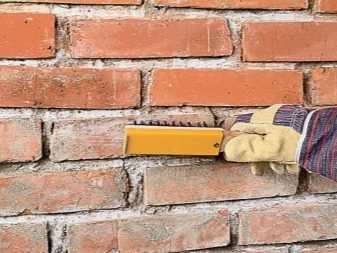
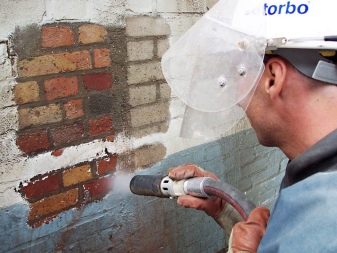
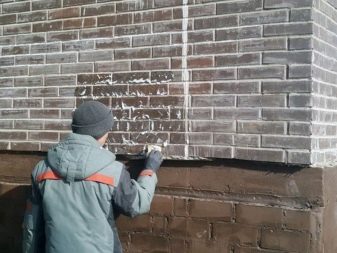
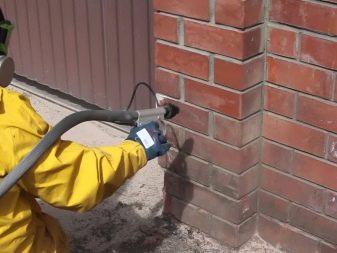
Instead of water, jets of sand can also be used. The devices that feed it can guarantee the release of the brick from the following contaminants:
- old dyes;
- bitumen;
- fuel oil and other petroleum products;
- mold spots;
- cement splashes and crusts;
- traces of corrosion.
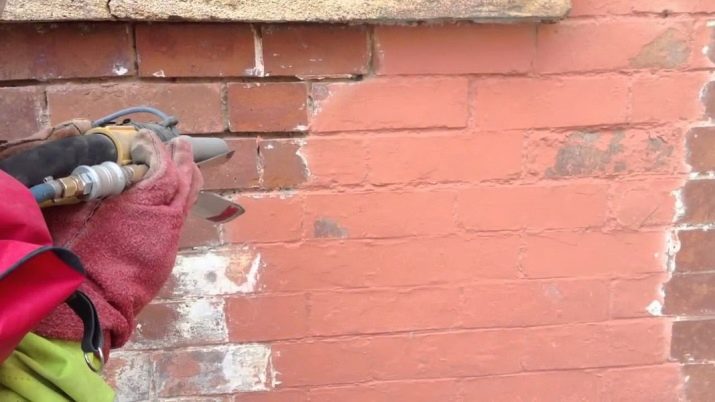
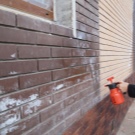
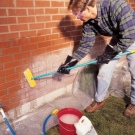
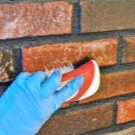
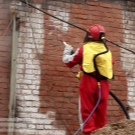
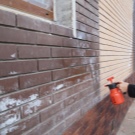
Sand supplied under significant pressure also exerts increased pressure on the surface. This helps to remove all inclusions that impair the appearance of a wall or other structure. Along with the two named options, the mechanical technique is widely used. It helps to remove all hardened substances, including drips of building mixtures, paints and varnishes. For work, various hand tools are used that allow chipping cement mortar and other blockages.
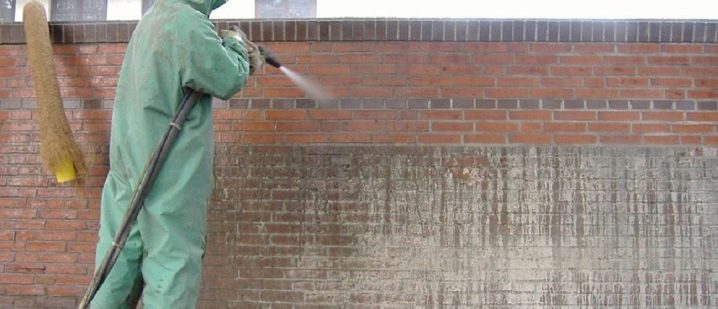
But very small dirt with a chisel, chisel and so on is inconvenient to remove. In addition, they can damage the surface. Therefore, the final processing is carried out using coarse-grained emery. To guarantee a positive result, it is necessary to rinse the brick with a jet from a hose after abrasive processing. This will wash away any dust particles. But all mechanical influences, even the most gentle ones, can damage a brick wall. Therefore, chemicals are also widely used. Help dissolve blockages:
- phosphoric;
- sulfuric;
- hydrochloric acid.
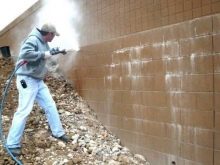
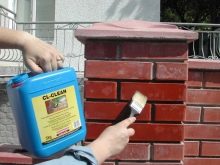
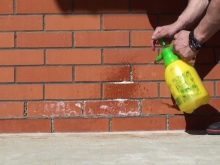
They are used only when processing ceramic bricks. But silicate blocks cannot be cleaned in this way. It will inevitably be damaged. The cement adheres very strongly to the silicate base. It is very difficult to remove traces of the solution and its excess mass with hand tools from it; it is necessary to use electric machines.
Funds
When one or another option for cleaning a brick is chosen, you need to prepare special tools.
If you plan to use a mechanical method to clean the surface of the masonry layer, you need to prepare:
- brush for metal processing;
- trowel (sometimes replaced with a spatula);
- a bar covered with emery;
- chisel;
- chisel;
- medium sized hammer.
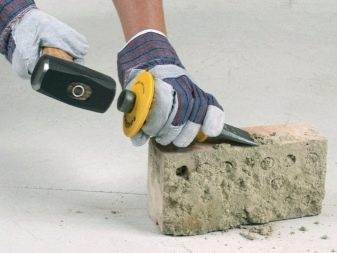
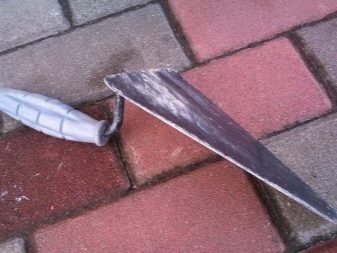
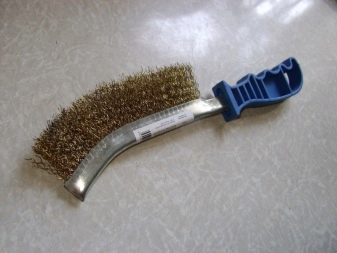
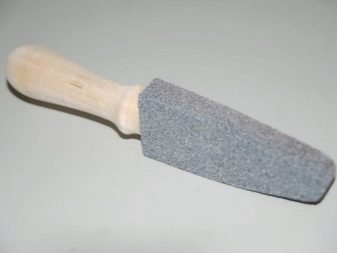
In addition to mechanical cleaners, you must keep a container of water ready. It reduces the durability of dried stains. Inside the house, the wall is moistened with rollers, brushes or sponges. If the work is carried out outdoors, and the pollution is very large, it is more practical to use a hose. In this case, excessive moisture should be avoided, since the brick collapses from contact with liquid.
But since any hand and power tool creates dust during operation, throws out abrasive particles, you need to take care of devices to protect your health.You can work with such a tool only in a respirator and special glasses. Important: Gloves should be worn. When cleaning bricks, clothes must be durable, non-marking; if it gets dirty, it shouldn't be pity. If you plan to use special chemicals, you will definitely need the same respirators, goggles and rubber gloves.

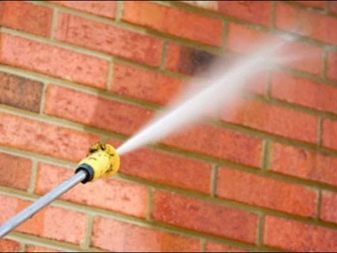
To remove dirt from silicate bricks mechanically, use:
- steel brushes;
- electric drills and attachments for them;
- emery.
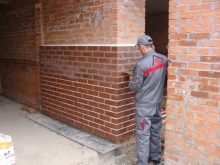
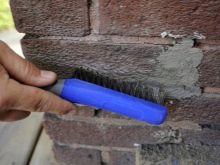
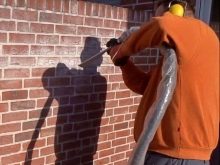
It is necessary to wet stains and deposits on silicate material in any case. This will greatly simplify the work. Solvents are bought ready-made or prepared independently - it depends on material capabilities and skills. In most cases, sulfuric and hydrochloric acid helps to clean the surface. Important: it is impossible to use them in pure form and in concentrated solutions, dilution up to 10% is required.
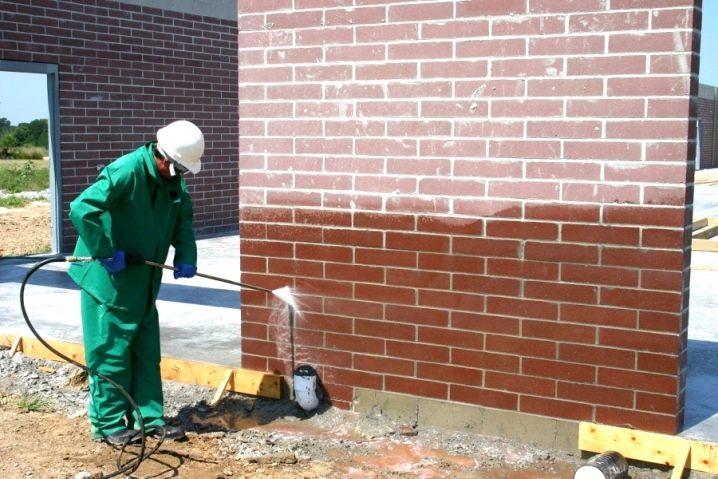
Chemical cleaning is completed by rinsing the surface with running water. This will remove corrosive substances along with undissolved particles. Special preparations are applied to the contaminated areas of the brick with brushes, rollers or brushes. It is recommended to combine chemical and mechanical cleaning. The blockages softened by chemicals are removed with spatulas and chisels (if the stains are large), or with steel brushes (when it is necessary to remove small marks and dots, specks).
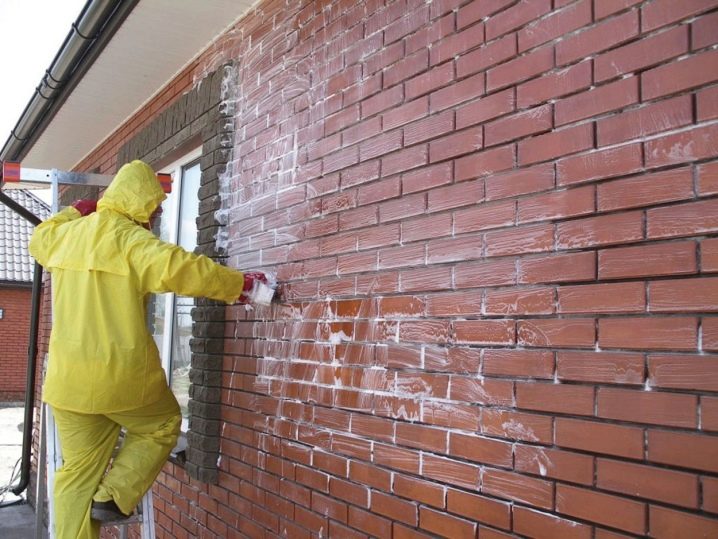
How to clean different types of dirt with your own hands?
The choice of cleaning method is determined not only by the type of brick (ceramic or silicate), and not only by the severity of contamination. You also need to pay attention to how much area the blockage covers, how quickly you should get rid of it. Emergency brick cleaning is carried out with special preparations. If there is no need to rush, greener methods are preferred. Already among them, an approach is chosen, focusing on the type of coverage.
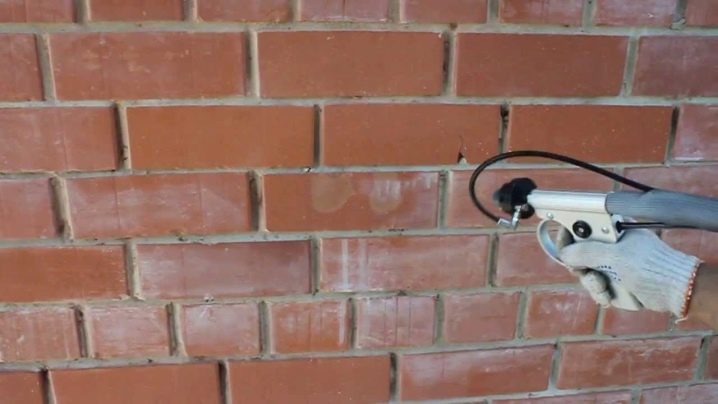
Immediately after laying, the walls have to be cleaned of cement. First of all, the mud is softened by wetting it with water. This will make the stone more brittle and help tear it away from the base material. Watering continues as long as the water continues to be absorbed. If it is still being absorbed, then the margin of safety of the stain has not yet been exhausted.
Then the solution is removed mechanically. If the concrete stains are flat, they are usually removed with spatulas, trowels or brushes of increased rigidity. If there are fragments of stone on the surface, they are slightly beaten off with a spatula. What remains is removed with a brush. But large inclusions will be removed only by a chisel and a hammer; other tools are impractical. When working, it is necessary to strike accurately and without excessive force. Strikes at right angles are strictly unacceptable. The pressure on the dirty areas should be up or down against the wall. When the unnecessary covering has been largely removed, the brick wall will need to be sanded. But the work does not end there - you still need to wash the surface, thereby getting rid of microscopic particles.
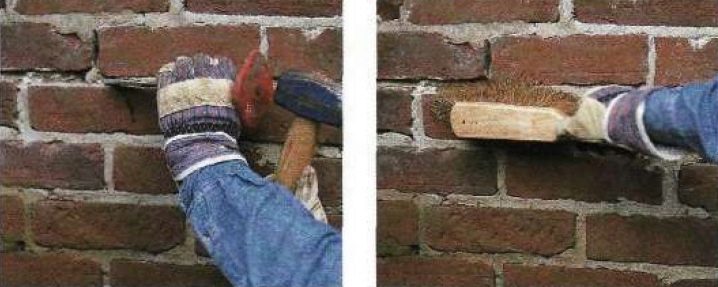
If the wall has stood for a long time, it is often necessary to get rid of the salt. The approach to raids can vary significantly depending on their nature. Some of the salt stains are simply washed off by watering the facade or individual bricks with a hose. Sometimes you don't even need to create a strong pressure, just wetting is enough. But in other cases, stronger means are required - special preparations and a stiff brush.

Important: reagents sold in stores can only cope with strictly defined types of mineral salts.
To return the look of the old brick to normal, you will have to either act by trial and error, or be guided by the recommendations of the sellers. They need to describe in detail the type of spots, layers (or better - show photographs). Diluting any drug, it is unacceptable to deviate from the prescribed instructions for the ratio of water and working mixture; the recommended processing time cannot be exceeded either.

From the available chemicals to combat salt blockages, a solution of hydrochloric acid is used. It can only be moistened with a thoroughly moistened substrate. When 10 minutes have passed, the wall is washed with a hose. As soon as the surface is 100% dry, it must be treated with a hydrophobic substance. If everything is done correctly, no new salt spots will appear on the surface in the next 10 years.

Brick walls outside are often covered with dried clay. This type of dirt is considered easy to clean. Even if the clay covers a significant part of the surface, you can get rid of it by simply wetting the contaminated areas. After 5-7 minutes, you can knock off the dirt with a hose stream. Large clay fragments located in easily accessible places are removed with a brush, after which the problem area is washed. But a brick can be clogged not only with clay - often different types of paint get on it. Any building paints, as well as resin and bitumen, help to cope with:
- kerosene;
- White Spirit;
- turpentine.
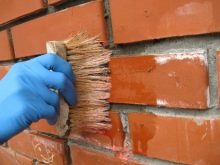
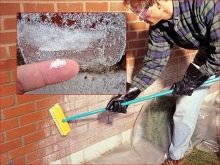
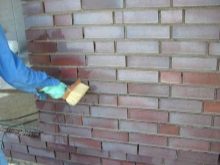
The problem areas are wiped off with an unnecessary cloth soaked in the chosen product. The same three substances will help get rid of greasy stains. Important: when using turpentine and kerosene, one must remember about their flammability, and white spirit is also toxic. In addition to fatty substances and paints and varnishes, brick walls often have to be removed from plaster. One method involves evenly wetting the material with a spray bottle.

When 3-5 minutes have passed, the decorative coating is easily removed with a trowel or spatula. But after abundant soaking with water, you can knock down the plaster with a stream of water from a hose. Small residues and single stains are removed with a steel brush. A more productive way is to use an electric drill. You just need to put on it special grinding attachments. The brickwork of the stove and fireplace must be regularly cleaned of soot and soot. In both cases, apply the grease remover with a brush. Attention: if the stain is already old, it is advisable to take formulations with organic solvents. They are much more active than ordinary cleaning products. Therefore, less time and effort is spent.

Useful Tips
In any case, whatever pollution appears on the brick wall, it is advisable to rinse and dry it after cleaning. After that, water repellents are used to improve the characteristics of the structure. Use a chisel to remove dirt as a last resort. It is not intended to remove cement (concrete) and can quickly become dull. Contrary to the recommendations of individual "professionals", it is impossible to rip off cement from bricks with nails - they will certainly leave traces that spoil the appearance.
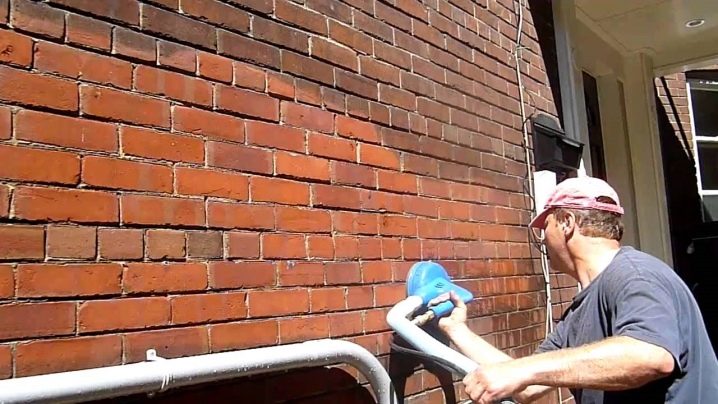
For information on how to clean a brick with your own hands, see the next video.













Tell me how you can clean or purely externally refresh the old darkened red brick facade? The brick is almost 100 years old, not factory-made, the builders then made it themselves and burned it in the yard. Sandblasting is unlikely to work. I heard that after dry cleaning, a pore of bricks occurs, and then it becomes dirty faster, is that so? I also thought to “wash” the facade with a transparent lime mortar to lighten it a little, and then cover it with some kind of protection, but this is purely my feminine idea, I don’t know if they do this? What do you advise?
Irina, dirt is removed from red bricks with the use of special acidic agents such as: "Cleaner Facade Cleaner BK" or "Universal Cleaner (500 ml) Karcher 6.295-385", based on acids such as sulfuric, phosphoric and hydrochloric. Bleach is also used. You will need: a cleaner, a brush, a metal brush and protective equipment: respirators, goggles and rubber gloves.The prepared solvent is applied with a brush to the areas to be cleaned. After that, you need to wait a while (about 30 minutes). Then clean with a wire brush.
Good evening. Can you please tell me: is it possible to remove the old plaster on the stove (in the house for about 5 years) and just leave the brick? So tired of smearing and whitening? Thanks.
Irina, you can, because Basically, the stove is plastered due to the aesthetic appearance. But keep in mind: if the stove is old, and there is a danger of cracking of the masonry mortar in the seams, then carbon monoxide can penetrate into the room. Also, over time, various insects can take root in the seams between the rows of bricks, especially if the masonry was made with natural materials. Timely processing and plastering will help prevent their appearance.
The comment was sent successfully.